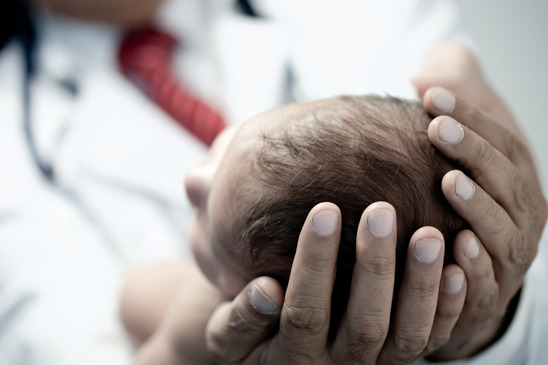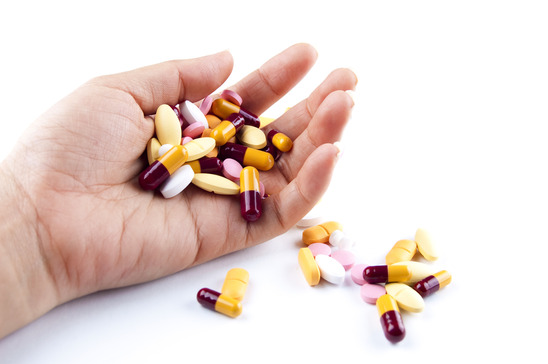How 14,400 Babies Became Drug Addicts
April 2012. University of Michigan researchers publish a shocking statistic: every hour, a baby is born addicted to opioids in the United States.
This research comes from looking at addicted newborns born between 2000 and 2009. In that same period, the number of pregnant women using opioids quintupled (500% growth). Many of the mothers claimed they did not know opioids would be dangerous to their babies.
After all, it they took it with a prescription.

Babies born addicted start with a big disadvantage. Compared to healthy newborns, they are likely to weigh less. And low birth weight can make physical and mental development harder, can increase the risk of disease, and can increase the chance of dying.
As a baby withdraws from opioids, he or she experiences all the same withdrawal symptoms as any opioid addict: tightened muscles, tremors, seizures, and irritability. He or she may not want to eat. And breathing troubles also often occur. Doctors and nurses that treat addicted babies also say their cries are distinct among other newborns. It conveys their pain and discomfort – a consequence of withdrawing from opioids.
On average, newborns like this end up staying in the hospital for 16 days.
Caring for an Addicted Newborn Baby Isn’t Cheap
It’s not just a problem for the newborns. In most cases, taxpayers foot the bill for these extra hospital days.
- In 2009, more than 75% of babies born addicted to opioids were on Medicaid.
- The average medical bill for an addicted newborn? $53,400.
- There are thousands of newborns like these every year.
- Overall in 2009, the cost of treating opioid-addicted infants was $720 million.
While reducing opioid abuse would also reduce the number of babies addicted before birth, educating expectant mothers about the risks of completely legal prescription pain killers would also help. This would be particularly effective in poor and rural areas where opioid abuse is more prevalent.
Most women know the risks of illegal drugs, alcohol, or smoking while pregnant. Widespread awareness campaigns helped this. The same thing may be needed for legal prescription pain medication awareness.
And the money benefit would be no small number, remembering the $720 million spent in 2009.
Fixing the Problem
Unfortunately, the answer may not be to stop ‘cold-turkey’ when pregnant. Substance abuse treatment programs need to determine the best way to help expecting mothers. Doctors warn that the best approach may be methadone, or a similar drug, to stabilize and slowly reduce the mother’s dependence. More drastic efforts may end up harming the baby.
Of course, half the battle may be just identifying expectant mothers taking opioid pain killers with a prescription.
Substance abuse programs also need to say out how best to assist the mother once the addiction-withdrawn baby is out of the hospital. Problems may arise.
But, research has shown that children suffering from drug addiction at birth do not always develop behavioral or social problems, as was predicted for the crack-addicted babies in the 1980’s and 1990’s. Having a stable, healthy home environment can reduce the risks for addicted babies. It’s the treatment programs for the mothers that help determine the best way to make that stable, healthy home a reality.
Drug addiction is never an easy problem to solve. With a prescription drug, one that’s completely legal and doctor-recommended with a prescription, it becomes even more challenging.
Do you know someone thinking of having kids? Or expecting already? Spread the word on Facebook, or email them this article.
Overdosing: America’s New (and Legal) Killer

If you saw a local news headline talking about a drug overdose death, what would you imagine happened? Something with heroin? Or cocaine?
Unfortunately, most of the drug overdose deaths in the United States are no longer caused by those drugs. Instead, a class of drugs called opioid painkillers is mostly responsible these days. These include oxycodone, hydrocodone, codeine, and methadone.
Which are all legal and prescribed.
In 2007, more people overdosed on opioid painkillers than on cocaine and heroin combined. According to the Centers for Disease Control (CDC), about 40% of drug overdose deaths in 2008 were caused by opioids.
Over 73% of all overdoses caused by prescription drugs are from opioid painkillers. And these overdose rates have all skyrocketed in the past ten years.
What happened?
The Rise of the Opioid
In the late 1990s, doctors were looking for ways to help patients deal with chronic pain. The answer was opioids, and the drugs became more widely available by way of prescriptions.
Since then, sales went up dramatically. According to the CDC, in 2010, 710 milligrams of opioids were sold for every man, woman, and child in the United States. That’s four times more than in 1999.
Not surprisingly, states with the highest opioid sales also have the highest opioid overdose death rates.
According to Dr. Susan Okie in the New England Journal of Medicine, opioids being widely available has increased not just fatal overdoses, but the also emergency room visits for opioid abuse. Between 2004 and 2008 the rates doubled. Plus, the number of people seeking drug abuse treatment increased 400% in just ten years.
Who’s Overdosing?
Most opioid overdose deaths occur among people abusing the drugs. But, the risk of overdose is actually growing among typical patients, mainly because more people are being prescribed for the long-term. OxyContin and Vicodin, for example, may be prescribed for chronic back or arthritis pain.
A study funded by the National Institute of Drug Abuse followed 10,000 opioid-using chronic pain patients between 1997 and 2005. Over 50 patients were hospitalized for an opioid overdose. Six died.
Based on the study, the researchers estimate that 1.8% of patients would overdose, as long as they were taking at least 100 milligrams of opioids per day. That may not seem like a lot of people, but the more people take opioids in high doses, the more the overdose risk increases.
And the more people are exposed to drugs they can potentially abuse.
More Than Just a Prescription
Chronic pain sufferers may be the most likely to overdose, but opioid painkillers are also prescribed for all kinds of other conditions. Codeine, for instance, treats coughs and diarrhea. Oxymorphone, another type of opioid, can be used to treat shortness of breath from anxiety.
Although these short term uses of the drug are relatively safe and pose little risk of overdose, they can open the door for abuse and addiction.
Unfortunately, these are the consequences of trying to help patients live with chronic pain. As more opioids were prescribed, more people gained access to them and used them for both medical and non-medical use.
Efforts to reverse some of the negative consequences began last year in Washington State; doctors are now required to monitor their patients’ pain and function levels while on prescriptions like these.
Whether such actions actually reduce these problems remains to be seen. But, many see it as at least a step in the right direction.


